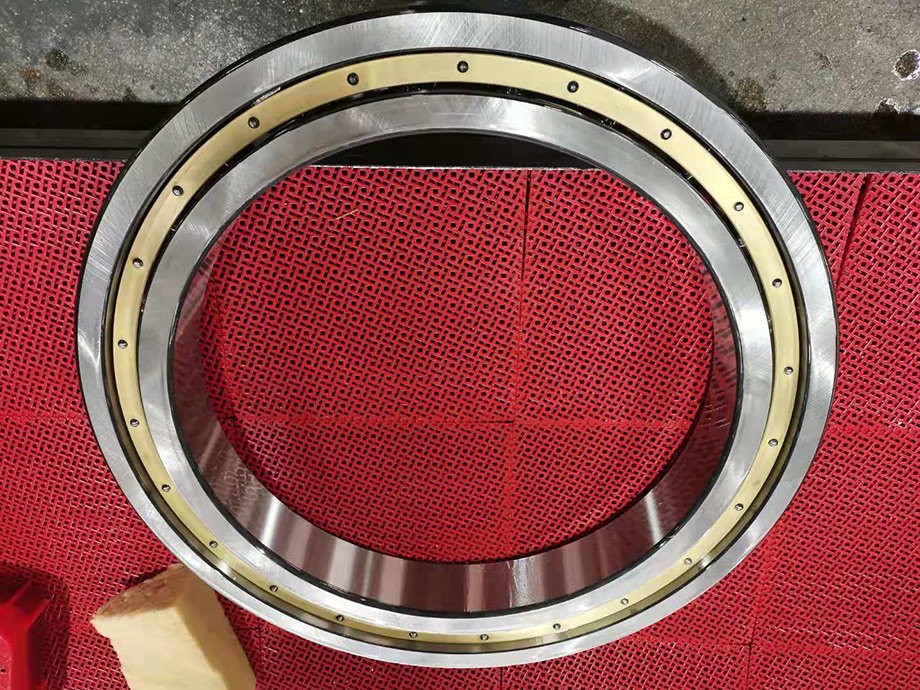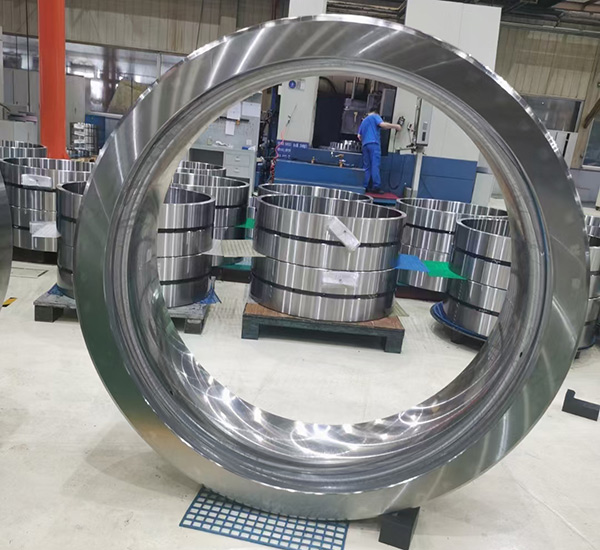Why can't reducing the oxygen content improve the fatigue life of bearing steel? After analysis, it is believed that the reason is that after the amount of oxide inclusions is reduced, the excess sulfide becomes an unfavorable factor affecting the fatigue life of steel. Only by reducing the content of oxides and sulfides at the same time, can the material potential be fully exploited and the fatigue life of bearing steel can be greatly improved.

What factors will affect the fatigue life of bearing steel? The above problems are analyzed as follows:
1. The effect of nitrides on fatigue life
Some scholars have pointed out that when nitrogen is added to the steel, the volume fraction of nitrides decreases. This is due to the reduction in the average size of the inclusions in the steel. Limited by technology, there are still a considerable number of inclusion particles smaller than 0.2 in. counted. It is precisely the existence of these tiny nitride particles that has a direct impact on the fatigue life of bearing steel. Ti is one of the strongest elements to form nitrides. It has a small specific gravity and is easy to float. A part of Ti remains in the steel to form multi-angular inclusions. Such inclusions are likely to cause local stress concentration and fatigue cracks, so it is necessary to control the occurrence of such inclusions.
The test results show that the oxygen content in the steel is reduced to below 20ppm, the nitrogen content is increased, the size, type and distribution of non-metallic inclusions are improved, and the stable inclusions are significantly reduced. Although the nitride particles in the steel increase, the particles are very small and are distributed in a dispersed state at the grain boundary or within the grain, which becomes a favorable factor, so that the strength and toughness of the bearing steel are well matched, and the hardness and strength of the steel are greatly increased. , especially the improvement effect of contact fatigue life is objective.
2. The effect of oxides on fatigue life
The oxygen content in steel is an important factor affecting the material. The lower the oxygen content, the higher the purity and the longer the corresponding rated life. There is a close relationship between the oxygen content in steel and oxides. During the solidification process of molten steel, the dissolved oxygen of aluminum, calcium, silicon and other elements forms oxides. The oxide inclusion content is a function of oxygen. As the oxygen content decreases, the oxide inclusions will decrease; the nitrogen content is the same as the oxygen content, and also has a functional relationship with the nitride, but because the oxide is more dispersed in the steel, it plays the same role as the fulcrum of the carbide. , so it has no destructive effect on the fatigue life of steel.
Due to the existence of oxides, steel destroys the continuity of the metal matrix, and because the expansion coefficient of oxides is smaller than the expansion coefficient of the bearing steel matrix, when subjected to alternating stress, it is easy to generate stress concentration and become the origin of metal fatigue. Most of the stress concentration occurs between oxides, point inclusions and the matrix. When the stress reaches a large enough value, cracks will occur, which will rapidly expand and destroy. The lower the plasticity of the inclusions and the sharper the shape, the greater the stress concentration.
3. The effect of sulfide on fatigue life
Almost all of the sulfur content in steel exists in the form of sulfides. The higher the sulfur content in the steel, the higher the sulfide in the steel. However, because the sulfide can be well surrounded by the oxide, the influence of the oxide on the fatigue life is reduced, so the influence of the number of inclusions on the fatigue life is not Absolutely, related to the nature, size and distribution of the inclusions. The more certain inclusions there are, the lower the fatigue life must be, and other influencing factors must be considered comprehensively. In bearing steel, sulfides are dispersed and distributed in a fine shape, and are mixed with oxide inclusions, which are difficult to identify even by metallographic methods. Experiments have confirmed that on the basis of the original process, increasing the amount of Al has a positive effect on reducing oxides and sulfides. This is because Ca has a fairly strong desulfurization ability. Inclusions have little effect on the strength, but are more harmful to the toughness of the steel, and the degree of damage depends on the strength of the steel.
Xiao Jimei, a well-known expert, pointed out that inclusions in steel are a brittle phase, the higher the volume fraction, the lower the toughness; the larger the size of the inclusions, the faster the toughness declines. For the toughness of cleavage fracture, the smaller the size of the inclusions and the smaller the spacing of the inclusions, the tougher not only does not decrease, but increases. Cleavage fracture is less likely to occur, thereby increasing the cleavage fracture strength. Someone has done a special test: the two batches of steel A and B belong to the same steel type, but the inclusions contained in each are different.
After heat treatment, the two batches of steels A and B reached the same tensile strength of 95 kg/mm', and the yield strengths of steels A and B were the same. In terms of elongation and area reduction, B steel is slightly lower than A steel is still qualified. After the fatigue test (rotational bending), it is found that: A steel is a long-life material with a high fatigue limit; B is a short-life material with a low fatigue limit. When the cyclic stress of the steel sample is slightly higher than the fatigue limit of the A steel, the life of the B steel is only 1/10 of the A steel. The inclusions in steel A and B are oxides. In terms of the total amount of inclusions, the purity of steel A is worse than that of steel B, but the oxide particles of steel A are of the same size and evenly distributed; steel B contains some large-particle inclusions, and the distribution is not uniform. . This fully shows that Mr. Xiao Jimei's point of view is correct.

Post time: Jul-25-2022
